Nepal 2013
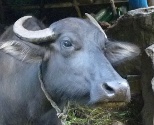

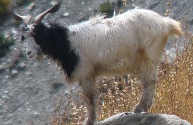
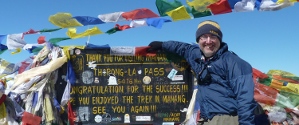

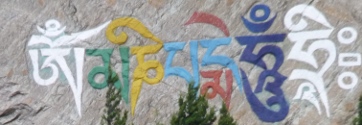
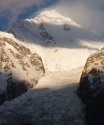
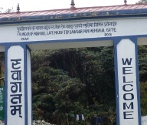

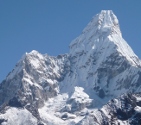
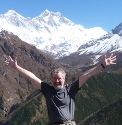
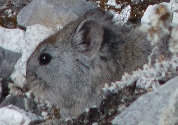
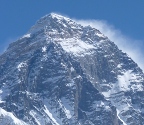
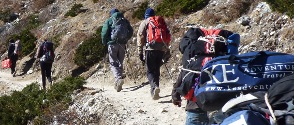
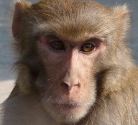

Where is Nepal? (and other facts about the country)

For about six weeks, Steve traveled to Nepal and did two major treks: the Annapurna Circuit and the Everest Base Camp Trek. The map above shows the major travel. Red marks the trekking routes, orange marks the vehicle (bus/car) routes, and black marks the air routes. The white lines are international borders, the one across the middle of the lower map is the Nepal/China (Tibet) border.
Kathmandu is the
capital of Nepal and has its only international airport. Both
directions I had three flights to get from San Francisco to Kathmandu
and back.
The Annapurna Circuit is a 134-mile route around the Annapurna Range, which includes Annapurna I (8091 meters or 26,545 feet in elevation). Dhaulagiri (8167 m = 26,795 ft) is also visible from this trek. Roads parallel much of the route, but I walked from Besi Sahar to Naya Pul, considered the full Annapurna Circuit. Parts of it involved road walking, but a good portion was done on parallel trails. The circuit involves hiking up one river valley, going over the Thorung La pass (5416 m = 17,768 ft), and then hiking down the river valley on the other side. At the end the route heads up again to take advantage of a view point at Poon Hill, then drops down to a road. Transportation to the start of the circuit was via road from Kathmandu. At the end, I took a local bus from Naya Pul to Pokhara. Pokhara is a fairly large city south of the Annapurna Range. From there I took a short flight back to Kathmandu after spending a few days in Pokhara.
The Everest Base Camp Trek is a 58-mile route that is mostly out-and-back from the small village of Lukla. Lukla has an airport which allows flying directly to the start of the trek from Kathmandu. As its name suggests, this trek is focused on getting close to Mt. Everest (8848 m = 29,028 ft), the highest mountain in the world. Lhotse (8501 m = 27,890 ft) is the fourth highest mountain in the world and is also seen frequently on this trek. Ama Dablam (6856 m = 22,493 ft), although quite a bit lower, is also a highlight of this trek as it is a stunning peak. The two main goals of this trek were to reach Everest Base Camp and to climb Kala Pattar (5550 m = 18,208 ft) which has one of the best views of Mt. Everest.
Trekking
in Nepal, especially on the popular treks that I did, involves staying
in guest houses. This means that it is not necessary to carry a
tent, sleeping pad, stove, utensils, or food. My pack was much
lighter than a typical backpacking trip in the Sierra. All of the
guest houses have bedrooms and a "restaurant." The room prices
were typically between Rs 100 - 300 [Rs is the Nepal currency, the rupee,
which at the time of my trip was around 100 to the US dollar],
but the expectation is that you
would buy dinner and breakfast at the guest house as well.
Generally my stay at a guest house was around Rs 1000, including the
room and meals. Everything was paid in cash and settled before
leaving in the morning. I had quite a stack of Rs 1000 notes
before starting the trek, as cash is hard to obtain on the treks.
On the Everest trek, since I was with a guided group, the guides
settled all of the costs and we only paid directly for cold drinks,
snacks, and other things that weren't covered by the package.
The menu in guest houses was fairly uniform across both treks (although the actual food was not as uniform!). Dal Bhat is the staple meal in Nepal, consisting of rice, lentil soup, and curry vegetables. Other choices on menus included noodle, rice, and potato dishes combined with vegetables, egg, or tuna (canned tuna being brought in). Various soups and sandwiches, as well as momos (a type of dumpling) and pizza were also usually on the menu. Most fresh meat on the treks was considered unsafe as refrigeration is often not available. Hot drinks like tea and "hot orange" (Tang in hot water) were also available. Cold drinks were harder to come by. Guest houses always had soda and bottled water, but the plastic bottles create a disposal problem so I avoided them. I used aqua mira chemical treatment for almost all of my water, and bought Tang mix in stores on the treks to provide a flavored drink (there are several flavors).
In the guest houses the bathroom was usually shared, usually inside but sometimes outside. They ranged from outhouse style pit or squat-over toilet to western-style flush toilets. There was no toilet paper provided but it was for sale by the roll in all guest houses. Most guest houses had showers available, sometimes for an extra cost, and sometimes with hot water, usually solar heated. I didn't take very many showers on my treks, especially at the cold higher elevations. Sinks were sometimes available, with or without running water. I always used my treated water for brushing teeth, so the running water was useful to me only to fill my water bottle before treating it.
Guest houses were heated only in the dining room with a wood-burning stove, which was fired up in the evening (if at all). In higher elevations where there are no trees, they use dried yak dung for fuel. The heat was especially appreciated by trekkers at the higher elevation villages which can get quite cold in the evening. Bedrooms were never heated, but my sleeping bag provided good warmth at night. Many guest houses provided blankets as well, but I preferred the consistency of my sleeping bag and usually didn't use the blankets.
For more
details, maps, and pictures, please follow the links below or use the next button at the bottom of each page to go
through all of the pages!
| Annapurna Circuit |
| Everest Base Camp Trek |
| Kathmandu and Bhaktapur |
| Logistics: Trip Planning and Gear List |
The overall calendar for the trip appears below, with the color key above. Blue text indicates where the night was spent.
Calendar
|
SUN |
MON |
TUE |
WED |
THU |
FRI |
SAT |
|
Sep 22 |
23 leave home |
24 |
25 arrive Kathmandu Kathmandu |
26
Kathmandu |
27 bus to Besi Sahar Bhulbhule |
28
Bahundanda |
|
29
Sattale |
30
Danakyu |
Oct 1
Chame |
2
Lower Pisang |
3
Manang |
4
Manang |
5
Yak Kharka |
|
6
Thorung Phedi |
7 Thorung La
Muktinath |
8
Muktinath |
9
Kagbeni |
10
Marpha |
11
Larjung |
12
Ghasa |
|
13
Tatopani |
14
Tatopani |
15
Shikha |
16
Ghorepani |
17 bus to Pokhara Pokhara |
18
Pokhara |
19
Pokhara |
|
20 flight to Kathmandu Kathmandu |
21 flight to Lukla
Phakding |
22
Namche |
23
Namche |
24
Tengboche |
25
Dingboche |
26
Dingboche |
|
27
Lobuche |
28 Everest Base Camp Gorak Shep |
29 Kala Pattar
Lobuche |
30
Pheriche |
31
Phortse |
Nov 1
Monjo |
2
Lukla |
|
3 flight to Kathmandu Kathmandu |
4
Kathmandu |
5
Bhaktapur |
6
Bhaktapur |
7 leave Kathmandu |
8 arrive home
|
9
|
